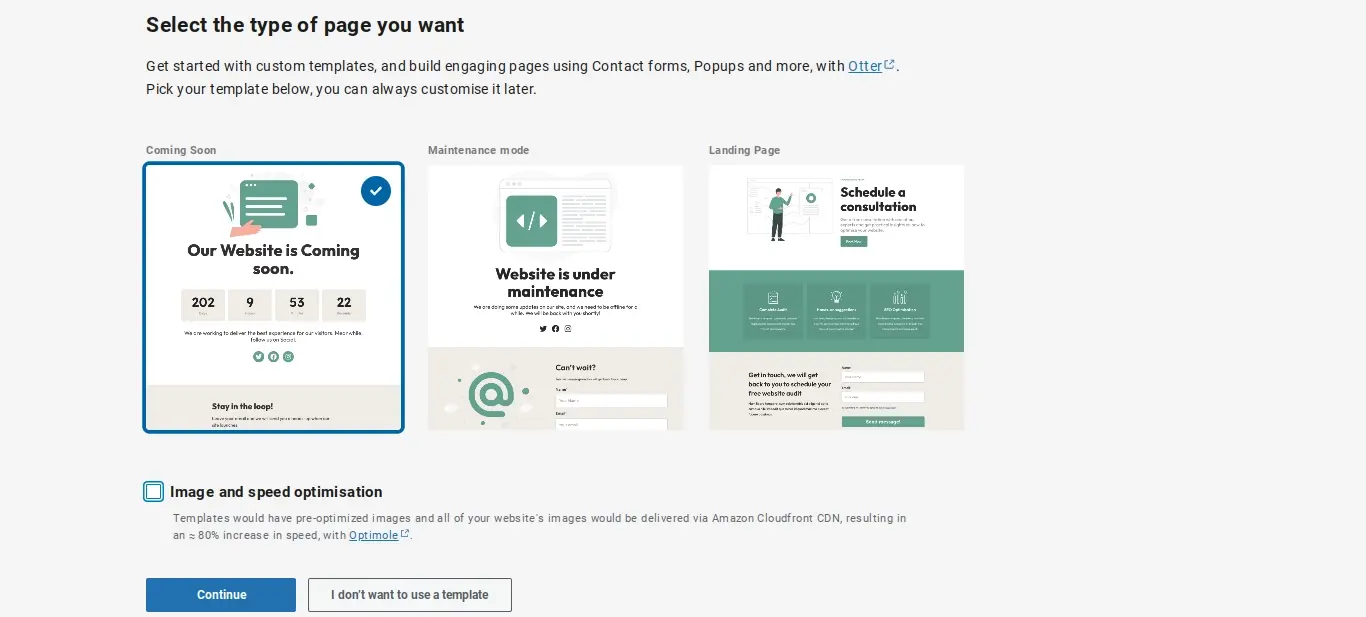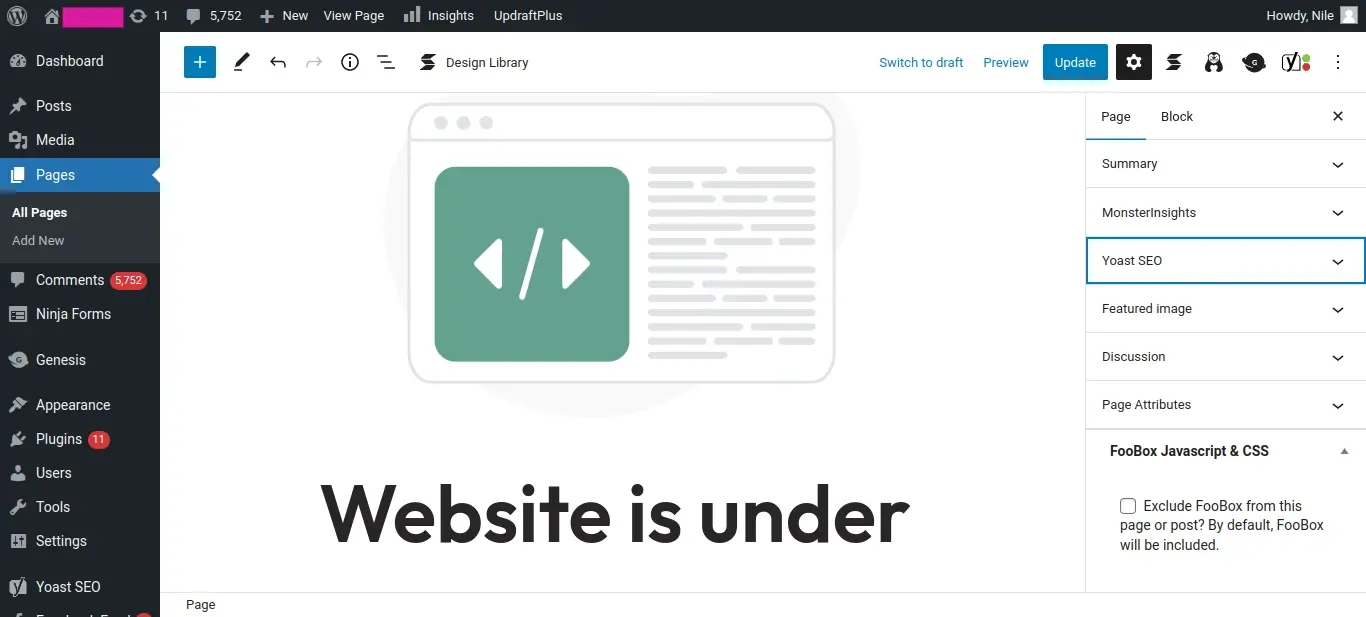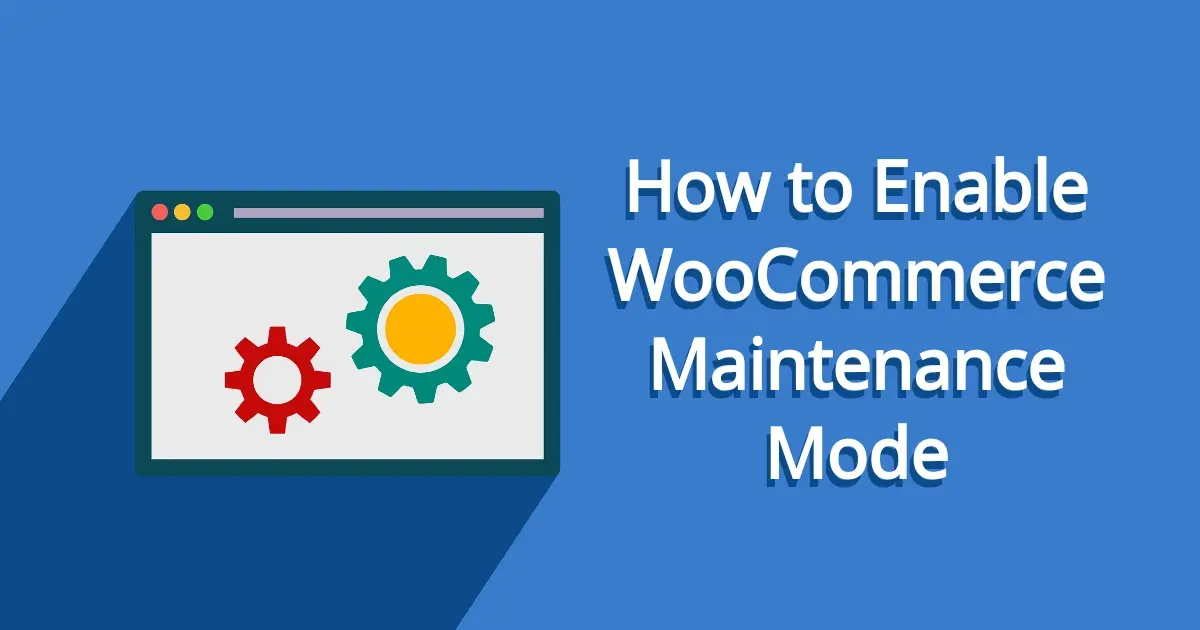WooCommerce is a robust eCommerce plugin for WordPress used by more than 6.5 million websites, that allows users to easily create online stores and sell all types of products. Like most software and technology, it might occasionally require maintenance or updates. Because of maintenance, your shop might need to be taken down or at least something put in place where your customers can’t make any purchases.
That’s where maintenance mode comes into play. In this article you’ll learn how to enable WooCommerce maintenance mode so you can get those routine issues fixed while letting your visitors know you’ll be back.
Why would you need to enable maintenance mode?
Here are just a few reasons why you might want to enable WooCommerce maintenance mode:
- Revamp design
- Add new plugins or switch old ones out
- Fix any error that might have popped up
Revamp design
Whether you’re going through a whole website redesign or revamping specific areas of WooCommerce to emphasize any specials or deals that you’re running, a maintenance mode can help keep things under wraps until you’re ready to unveil it to your customers.
Add new plugins or switch old ones out
Some plugins might become useless after some time and you might need to replace them. In the case that the plugin is something that is necessary for your site and is supposed to be used for WooCommerce, you may need to enable maintenance mode white switching the old for the new.
Fix any error that might have popped up
Sometimes things happen and your site has an error. While you’re troubleshooting WordPress to find out what happened, and then fix the problem, enabling maintenance mode can let your customers know that the issue is temporary and to return later.
How is a maintenance mode plugin different from the WordPress maintenance mode feature?
It’s important to note that WordPress used to have a built-in maintenance mode that was triggered when something like a plugin or WordPress core either was slow on updating, or didn’t update properly. This is different from a maintenance mode plugin.
In fact, WordPress now uses a page that basically gives a simple message that an error occurred and to check your email. If you’ve added your own email address as the primary admin contact for the website, WordPress will email where the error occurred so you can troubleshoot the issue. A maintenance mode plugin won’t do this. They are more of a designated landing page.
How to Enable WooCommerce Maintenance Mode in 4 Steps
- Install a Maintenance Mode plugin
- Configure the Maintenance Mode plugin’s settings
- Customize your Maintenance mode page
- Test your Maintenance mode page
1. Install a Maintenance Mode Plugin
WooCommerce doesn’t really offer a built-in Maintenance Mode solution, but there are some WordPress maintenance mode plugins that you can use for that purpose. There are many free maintenance mode or coming soon plugins available in the WordPress plugin directory that you can use to enable WooCommerce maintenance mode. If you just need something simple and straightforward, you can use LightStart.
If you only want to enable WooCommerce maintenance mode wherever your shop is located, then you can use the plugin add-on called Maintenance mode for WooCommerce.
To install either of these plugins, you’ll need to go to the Plugins menu item in your WordPress admin dashboard. Under Plugins, you’ll choose Add New. On the Add plugins page, simply search for the plugin you wish to install, and from there, you’ll see some results. Install and activate your plugin.
2. Configure the Maintenance Mode plugin’s settings
As a note, two different plugins were suggested. Depending on what you chose, try one of the two following instructions to configure your maintenance mode plugin.
Configuring LightStart’s settings
After you’ve installed and activated LightStart, you’ll be prompted to go through a setup wizard.

You have a couple templates to choose. You can use any of them. For this article, choose Maintenance Mode. There are a couple steps you can skip, and then you’ll be sent to edit your Maintenance page.

The great thing is that the Maintenance page can be edited just like any other post or page. You can edit the text or replace images with ones that you want to use. You can even add your own newsletter optin form.
Once you’re done editing and customizing the content of your page, then you can click the Update button. To enable maintenance mode, go to your Settings section of your WordPress admin menu and find the LightStart submenu item. From there, you can select Activate to turn the maintenance mode on.
Configuring Maintenance Mode for WooCommerce
For the Maintenance Mode for WooCommerce, make sure WooCommerce is installed. Once you’ve installed this plugin, simply create your own landing page that you want to use as your Maintenance mode page. To enable the page, go to your WooCommerce settings, and navigate to “Maintenance mode”. From there you can enable WooCommerce Maintenance mode and fill out the other settings.
3. Customize your Maintenance mode page
Both plugins don’t offer much in terms of customization, but they do allow you to use the Gutenberg content block editor so you can build a Maintenance mode page. You can create several types of pages dedicated to Maintenance mode, whether you need to truly fix something, or you wish to use it as a gateway until you unveil new deals or a design overhaul of your website.
You should take advantage of this in order to make sure your customers return as soon as you’ve disabled your maintenance mode. As a note, if you’re only going to be down for no more than a couple hours, then you don’t need to worry about making an elaborate maintenance mode page. However, in the case that you plan to shut down your website for a day or two, then it’s best to create a page that can get your visitors to do something. This means that you could have them subscribe to your newsletter, or follow you on a specific social media channel.
4. Test your Maintenance mode page
When you’ve put together a maintenance mode page that you’re satisfied with, it’s time to test it out. Some maintenance mode plugins allow you to preview the page you wish to display. However the best way to test it, is to activate maintenance mode and view it in an Incognito browser, or after you’ve logged out of your website’s admin area.
If you use the Incognito option, this will allow you to stay logged in so you can adjust the page until it looks correct.
In Summary
When you enable WooCommerce maintenance mode, you’re making sure that your customers still have a good experience on your website. A maintenance mode page or landing page might be simple, but it’s better than your customer seeing nothing on the site, or an error. You can use your maintenance mode page to even drive customers into subscribing into your newsletter. Hopefully this article has been of help, and whether you use WooCommerce or not, perhaps using a maintenance mode option will help your site.
Enabling WooCommerce maintenance mode is a great way to ensure the security of your online store and protect it from potential attackers. However, it is important to remember that in addition to this measure, a good and reliable hosting provider is just as crucial for an online store’s security and performance. By combining both measures, you can ensure the safety and success of your store.
Frequently Asked Questions
Do I need web developer skills to use Shopify or WooCommerce?
No. Both platforms welcome beginners, but you might get more out of WooCommerce’s extensions if you’ve got some previous experience.
How long does It take to set up a WooCommerce store?
You can install WooCommerce to your WordPress site with just one click. Then, you just need to add your products and you’re off. You could be up and running in just a few hours.
How easy is it to switch between WooCommerce and Magento?
At Verpex we can host either site no problem. However, you’ll need to be aware that there can be some difficulties due to the customizable nature of Magento, and functionality could be lost.
Is hosting a WooCommerce site complicated?
Not at all. We can arrange managed hosting here at Verpex and can provide advice and guidance on getting the most out of the platform.

Nile Flores is a long time professional blogger, as well as WordPress website designer and developer from the St. Louis Metro East. Nile blogs at NileFlores.com, where she’s passionate about helping website owners, whether they’re small business owners or bloggers. She teaches about Blogging, Social Media, Search Engine Optimization, Website Design, and WordPress. Additionally, Nile loves to speak at WordCamps (WordPress conferences) across the United States. When Nile isn’t knee-deep in coding, she’s a proud mom of a college student, and enjoys oil painting, cigar smoking, nail art design, and practicing traditional Okinawan kempo karate.
View all posts by Nile Flores





















